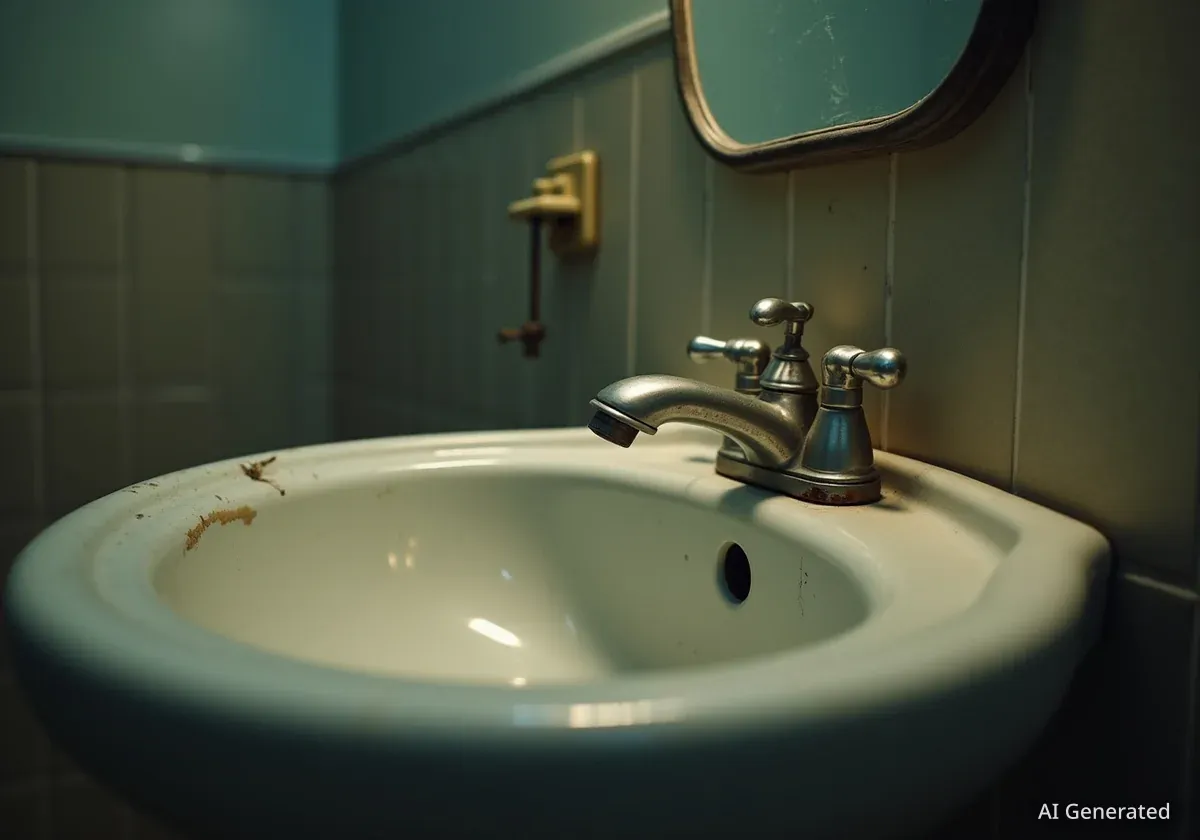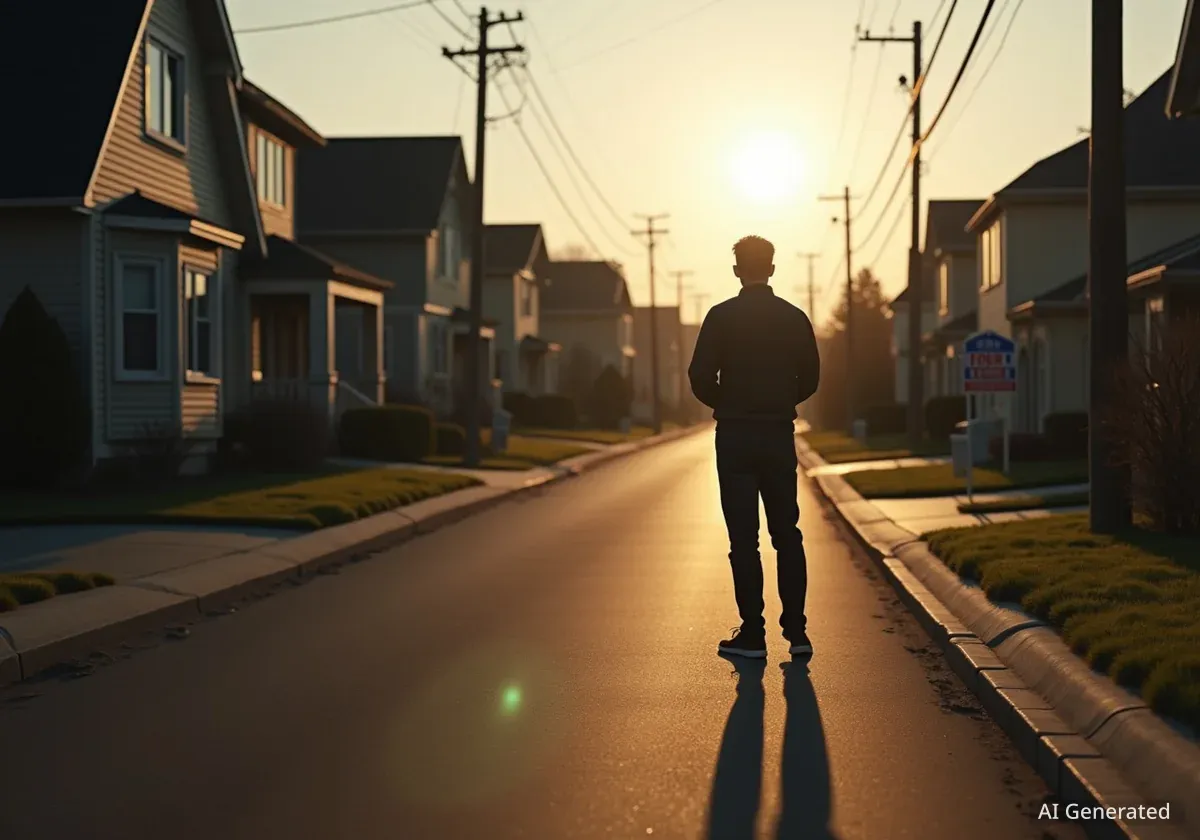When selling a home, the bathroom often becomes a make-or-break space for potential buyers. Real estate experts report that certain common issues, from outdated fixtures to poor ventilation, can significantly reduce a property's appeal and even cause a sale to fall through. These problems often signal larger maintenance concerns to buyers, turning what should be a sanctuary into a source of anxiety.
Industry professionals have identified nine specific bathroom details that frequently deter buyers. Addressing these issues, many of which can be fixed with a modest budget, can dramatically improve a home's marketability and help secure a better offer.
Key Takeaways
- Outdated features like colored tubs and brass faucets immediately suggest costly renovations to buyers.
- Signs of poor maintenance, such as dirty grout, lingering odors, and poor ventilation, create a negative impression of the entire home.
- Functional problems, including awkward layouts and evidence of water damage, are often considered major red flags and potential deal-breakers.
- Many of these critical issues can be addressed with simple, low-cost updates under $500.
The High Cost of Outdated Aesthetics
A buyer's first impression of a bathroom is heavily influenced by its style. Features that appear dated can immediately make a space feel old and poorly maintained, causing buyers to mentally calculate the cost of a full renovation.
Vintage Fixtures and Finishes
While some vintage styles are popular, certain bathroom trends from past decades are a major turnoff. According to Tammie Carter, a real estate expert at Engel & Völkers Atlanta, brightly colored fixtures are a prime example.
“Grandma’s tub. Retro is cool until it is pink or green, making buyers see ‘renovation budget’ not ‘vintage charm.’”
Jacob Naig, a real estate agent and owner of We Buy Houses in Des Moines, agrees. He points to features like brass faucets from the 1980s, laminate countertops, and old vinyl flooring as clear indicators that a bathroom needs significant updates. He recalls a property where outdated decor was a major obstacle.
“The bathroom was still swathed in floral wallpaper with gold trim,” Naig shared. “It was a ‘must-fix project’ for every buyer we showed it to.”
Improper Lighting and Flooring Choices
Lighting can dramatically alter the perception of a space. Carter notes that “Hollywood” vanity lights, the large globe bulbs often seen in older homes, can make a bathroom feel dated. She advises sellers to replace them, calling it an “easy fix that instantly updates a bathroom.”
Another feature that raises immediate concerns is carpeting. Carpet in a bathroom, especially around the toilet, is viewed as unhygienic by modern buyers. Carter is unequivocal on this point: “Yuck! Enough said.” She insists that removing it, even if replaced with inexpensive tile, is a worthwhile investment.
Warning Signs of Neglect and Poor Maintenance
Beyond aesthetics, buyers are highly sensitive to signs that a bathroom has not been properly cared for. These issues often suggest that other, more serious problems may be lurking elsewhere in the home.
The Bathroom as a 'Tell'
According to Jacob Naig, many buyers view the condition of the bathroom as an indicator for the entire property. “If it smells dirty, buyers will believe the entire home is dirty,” he explains. This psychological connection makes small bathroom details disproportionately important during a showing.
Unpleasant Odors
A bad smell is one of the fastest ways to repel a buyer. “In the bathroom, if it smells like a locker room (or worse), buyers will not stick around long enough to admire the tile,” Carter warns. Musty or mildewy smells are particularly alarming, as they point to potential moisture problems.
Even the smell of cleaning products can be a problem. Naig recounted a showing where the seller used an excessive amount of bleach. “Instead of calming buyers, it only deepened suspicion that they were hiding something worse,” he said.
Dirty or Damaged Grout
The condition of tile grout is a small detail with a big impact. Carter states that cracked and dirty grout makes buyers “wonder what else hasn’t been cleaned in the last 15 years.” Clean, fresh grout lines make a bathroom look well-maintained and sanitary. Applying new caulk is another simple step that can make a tub or shower area look fresh and clean.
Minor Cosmetic Blemishes
Small imperfections like scratches on a vanity, stains on the floor, or marks on the walls can collectively create a negative impression. Naig emphasizes that buyers notice these details immediately. “The little cosmetic blemishes that can plague a bathroom carry an unreasonable importance, since they imply inattention,” he said.
Functional Flaws and Structural Red Flags
Some bathroom problems go beyond cosmetic issues and point to potentially expensive structural or plumbing repairs. These are often the most serious concerns for homebuyers and can quickly kill a potential deal.
Evidence of Long-Term Repairs
Visible signs of water damage, mold, or old, corroded plumbing are major red flags. Naig identifies these as “instant deal breakers” because they signal the possibility of expensive and complicated repairs. Buyers are typically unwilling to take on a property with known moisture or plumbing issues.
The Importance of Ventilation
Proper ventilation is crucial in a bathroom to manage moisture and prevent the growth of mold and mildew. A lack of ventilation can cause condensation to build up, leading to damage to paint, drywall, and even structural components over time.
Inadequate Ventilation
A bathroom without a fan or a window that opens is a significant concern. Poor ventilation can lead to lingering odors and, more importantly, hidden mold and mildew. Naig described a situation where poor ventilation had a visible effect. “I had condensation freeze on the inside windows of a home in an Iowa winter, and my first thought was larger structural issues,” he said.
Poorly Designed Layouts
Even if a bathroom is updated, an awkward layout can be a major deterrent. “Bad layouts are poison to the buying process,” Naig stated. Common issues include doors that swing into the toilet, vanities that block access to the shower, or a general lack of functional space.
He shared a specific example of a client who withdrew an offer because of a poorly designed master bathroom. “You had to squeeze and walk sideways... to even close the door between the shower and vanity,” he recalled. Such functional frustrations can make a home unlivable for some buyers.
Simple Fixes Can Secure a Sale
While the list of potential problems may seem daunting, experts emphasize that many of these issues can be resolved with minimal investment. Simple updates can significantly improve a bathroom's appeal and prevent buyers from walking away.
Naig suggests a checklist of affordable improvements:
- Apply fresh caulk and grout around the tub and tiles.
- Replace outdated light fixtures with modern alternatives.
- Install a new, stylish mirror.
- Update cabinet hardware, such as knobs and pulls.
- Paint the walls a fresh, neutral color.
According to Naig, these types of updates can often be completed for under $500. Investing a small amount of time and money to address these common turnoffs can make the difference between a quick sale and a property that languishes on the market.





